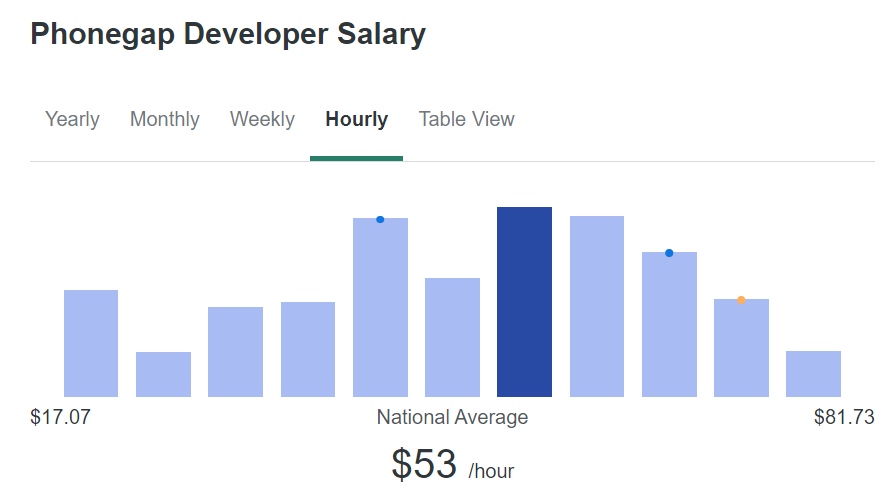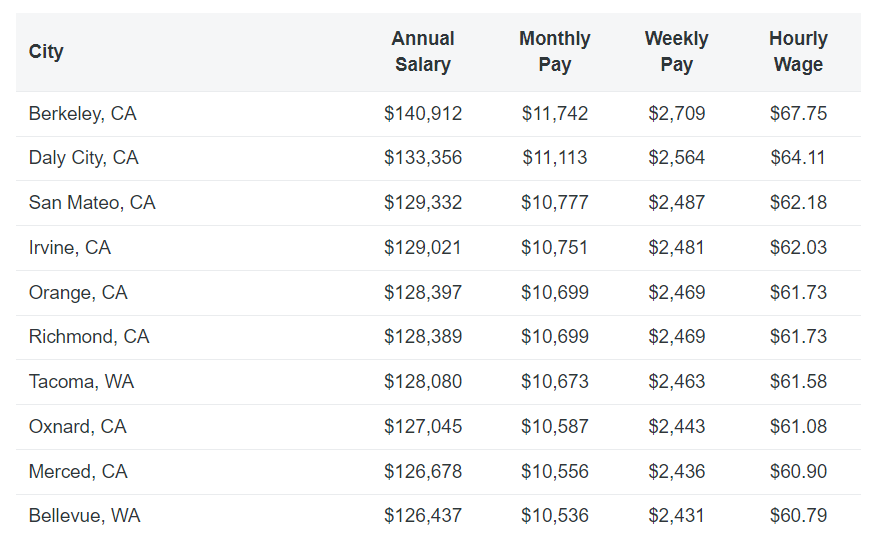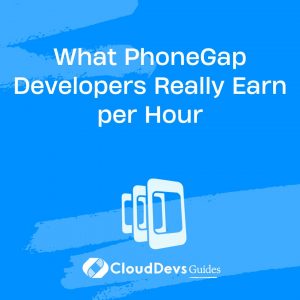What PhoneGap Developers Really Earn per Hour
The average hourly pay for a PhoneGap Developer in the United States stands at $50.40. Most PhoneGap Developers can expect to earn between $38.22 and $61.06, representing the 25th to 75th percentiles, respectively, across the nation.
Table of Contents
This guide is designed to provide valuable insights for both individuals skilled in PhoneGap development and for businesses seeking to hire for these capabilities. Also, It is important to be aware of the current rates for the skill before you start to hire PhoneGap developers for your project. Whether you are a seasoned PhoneGap developer or a company planning to utilize PhoneGap for your mobile app projects, this guide will offer a clear understanding of the current financial landscape in PhoneGap development.
The PhoneGap Developer’s Average Pay (USD)
Based on data from ZipRecruiter, Glassdoor, and Salary.com, there are subtle differences in PhoneGap developer salary estimates across these platforms. ZipRecruiter generally offers the highest estimates for all experience levels, while Glassdoor’s figures tend to be in the middle for junior and mid-level developers. Salary.com’s estimates, on the other hand, start higher for junior developers but become more conservative as the experience level increases, closely aligning with Glassdoor for senior developer roles.

PhoneGap Developer Hourly Rates Across the Globe
| Region | Average Hourly Rate (USD) |
|---|---|
| North America | $45 - $65 |
| South America | $20 - $40 |
| Western Europe | $40 - $55 |
| Eastern Europe | $25 - $45 |
| Australia | $42 - $62 |
| Asia | $20 - $35 |
| Africa | $15 - $30 |
North America leads with the highest average rates, closely followed by Australia and Western Europe. Eastern Europe and South America present mid-tier rates, while Asia and Africa tend to offer the most competitive, lower-end rates in the global market. These differences underscore the importance of considering both skill level and geographic location when budgeting for PhoneGap development projects.
According to ZipRecruiter, the analysis highlights 10 cities where the average hourly rate for a PhoneGap Developer surpasses the national average. Leading the list is Berkeley, CA, with Merced, CA, and Daly City, CA following closely in second and third place. This data suggests that for PhoneGap Developers, relocating to these cities could offer significant opportunities for financial growth. The above-average salaries in these 10 locations indicate strong prospects for economic advancement in the field of PhoneGap development.

How PhoneGap’s Hourly Rate Stands Against Other Mobile App Development Frameworks
| Mobile App Development Framework | Average Hourly Rate (USD) |
|---|---|
| React Native | $55.00 - $80.00 |
| Flutter | $50.00 - $75.00 |
| Ionic | $40.00 - $70.00 |
| Xamarin | $45.00 - $75.00 |
| jQuery Mobile | $35.00 - $55.00 |
| Swiftic | $30.00 - $50.00 |
| NativeScript | $40.00 - $65.00 |
In comparing hourly rates across various mobile app development frameworks, React Native stands out with potentially the highest rates, a testament to its current market demand and cross-platform capabilities. Flutter and Xamarin follow closely, indicating their increasing adoption in the app development community.
PhoneGap, Ionic, and NativeScript maintain competitive rates, reflecting their steady demand. On the other hand, jQuery Mobile and Swiftic are on the lower end of the spectrum, possibly due to the evolving preferences for newer or more comprehensive frameworks in mobile app development.
Conclusion
This blog post offers a clear and concise overview of the hourly earnings for professionals in the PhoneGap development arena. This guide has highlighted the key factors that influence these rates, including experience, location, and the complexity of projects. It serves as an essential resource for PhoneGap developers seeking to understand their market value, as well as for employers looking to hire such expertise.
The guide underscores the niche yet significant role of PhoneGap in the mobile development sector and the corresponding compensation trends, providing a useful benchmark for navigating the financial aspects of working with this technology. You can check out our PhoneGap Developer Annual Salary Rate to learn about the annual salary rates you can earn in the US and across the world. We bring you a complete PhoneGap Developer Hiring Guide along with the PhoneGap Developer Job Description and PhoneGap Interview Questions guide which will help you in the process of hiring a PhoneGap developer in 2023.
Table of Contents








